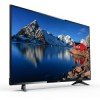Magnavox 55MV387Y/F7 Owners Manual - Page 12
For 4:3 video signal, For PC input signal, Closed captions, Caption service, Digital caption service
 |
View all Magnavox 55MV387Y/F7 manuals
Add to My Manuals
Save this manual to your list of manuals |
Page 12 highlights
For 4:3 video signal Caption settings Automatic Super zoom 4:3 Wide screen Movie expand 16:9 Movie expand 14:9 Automatic Super zoom 4:3 Movie expand 14:9 Movie expand 16:9 Wide screen Other than DTV and HDMI connected devices, enlarges the picture to best fit the screen. DTV and HDMI connected devices display the picture at its original size. The subtitles may remain visible. Displays a 4:3 picture at a 16:9 size; the picture is stretched horizontally and vertically and its left and right edges are enlarged. This crops out some of the top and bottom of the picture. Displays a 4:3 picture at its original size. Sidebars appear on both edges of the screen. Displays a 4:3 picture at a 14:9 size; the picture is stretched horizontally and vertically. This crops out some of the top and bottom of the picture. Sidebars appear on both edges of the screen. Displays a 4:3 picture at a 16:9 size; the picture is stretched horizontally and vertically. This crops out some of the top and bottom of the picture. Displays a picture that is stretched out of proportion to fill the screen. For PC input signal 4:3 Wide screen Unscaled ● This unit can also be connected to your PC that has a DVI terminal. Use an HDMI-DVI conversion cable for this video connection and it requires stereo mini 3.5mm plug audio cable for analog audio signal as well. ● Refer to 16:9 video signal on this page if the PC has HDMI output. 4:3 Wide screen Unscaled Displays a proportionately stretched picture. Sidebars appear on both edges of the screen. Displays a picture that is stretched out of proportion to fill the screen. Displays a picture in its original size. If the signal source has side or top-bottom bars inserted into the picture, the Picture format function will not eliminate them. Closed captions displays the audio portion of the program as superimposed text over the video. 1 Press Q and use J K to select Setup, then press OK. 2 Use H I J K to select TV settings, then press OK. 3 Use H I to select Accessibility, then press OK. 4 Use H I to select Caption settings, then press OK. Closed captions You can choose the closed caption display. 5 Use H I to select Closed captions, then press OK. 6 Use H I to select On, Off or CC w/ mute, then press OK. Cable / NTSC (Analog) TV operation Caption service 5 Use H I to select Caption service, then press OK. 6 Use H I to select the desired Caption service, then press OK. CC-1 and T-1 CC-3 and T-3 CC-2, CC-4, T-2 and T-4 The primary closed captions and text services. The closed captions or text is displayed in the same language as the program's dialog (up to 4 lines of script on the TV screen). Serve as the preferred data channels. The closed captions or text is often a secondary language. Rarely available and broadcasters use them only in special conditions, such as when CC-1 and CC-3 or T-1 and T-3 are not available. ● There are 3 display modes according to programs: Paint-on Displays characters on the TV screen immediately. Pop-on Once characters are stored in memory, they are displayed all at once. Roll-up Displays the characters continuously by scrolling (max. 4 lines). Digital TV operation Digital caption service 5 Use H I to select Digital caption service, then press OK. 6 Use H I to select the desired Digital caption service, then press OK. CS-1 to CS-6 Select one of these before changing any other item in Caption settings menu. Choose CS-1 under normal conditions. Digital caption options You can choose the size, font, color, background and other characteristics for the captioned text. 5 Use H I to select Digital caption options, then press OK. 6 Use H I to select an item and press OK, then use H I to Select the desired Setting and press OK. 12 Continued on next page.















